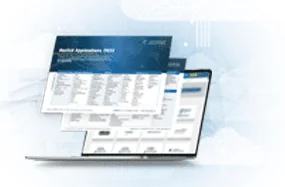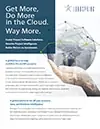
Why Scope Creep Will Become Inevitable and How to Handle It

Upgrades can be excellent for getting the most bang for your hosted software service buck. But should you adopt upgrades as soon as they arrive – or should you let the latest and greatest features age a little first? It’s clear that you must be satisfied with a decision you make to move to a newer version. To make sure that is the case, we have a proven process in place. Here’s how it works.
- A client (you, for instance) submits a request for an upgrade
- We determine the timeframe needed for this request to be met correctly
- Initial/performance testing is done by the client. The client’s production environment is backed up for User Acceptance Testing (UAT)
- Client checks all previous functions and advantages are still available
- Results are entered in our overall vetting information for this software
- If issues arise, we can refer to this vetting document to find root causes.
- A new server is set up with the copy of the current environment for UAT. The physical software upgrade is performed in this UAT test environment
- This is a task that goes unnoticed by many clients, but that is the most important and time-consuming part of all
- It allows us to initially install the software without any impact on your current environment.
- Icons are created for the LOADSPRING CLOUD PLATFORM interface and users from the client’s organization are granted access
- Client performance testing is done again for the new version in this environment
- The client signs off on the UAT
- Production cutover (steps 4-7 are repeated, but this time for the client’s real production environment.)
With this process, we can ensure all our T’s are crossed, and our I’s are dotted.
LOADSPRING also validates the latest versions of software independently. We want to know for sure if a new release is a valid update, or if there are any major bugs to contend with. This can take 4 – 6 months. In addition, vendors often make a fix pack available shortly after a major release, which we then validate as well.
Our testing and bug hunting cover functionality, interfaces, integration with other software, performance, and reliability. We know that you depend on the software we host to achieve your business goals and we won’t let any upgrade out into the open until we are satisfied that it will work properly.
Security is also a major concern. With all the will in the world, software vendors cannot build products that are perfectly impregnable against hackers and cyber criminals. LOADSPRING’s own hosting infrastructure and environments are regularly and frequently tested for security. We need the applications that we host to be as secure as possible too.
So, we also test them for vulnerabilities and flaws in their security. From data exfiltration to defects in identity management and holes in defenses against sabotage, we check and check again. While we run batteries of automated tests to reliably speed things up where possible, we also use our extensive experience and knowledge draw out security shortcomings where purely software-driven testing cannot. The tougher we make it for hackers to get even a foot in the door, the less chance there is that they will even want to try.
You might think that we are a little paranoid, but it’s all for a good cause! On several occasions we have protected our customers from major crises by finding vulnerabilities and bugs in vendors’ offerings and getting them fixed before making a software upgrade available.
So, while our goal is for all our clients to get what they want and to gratify requests for upgrades, a little patience while new versions are checked correctly can give you an excellent return in quality, security, and productivity afterwards.











